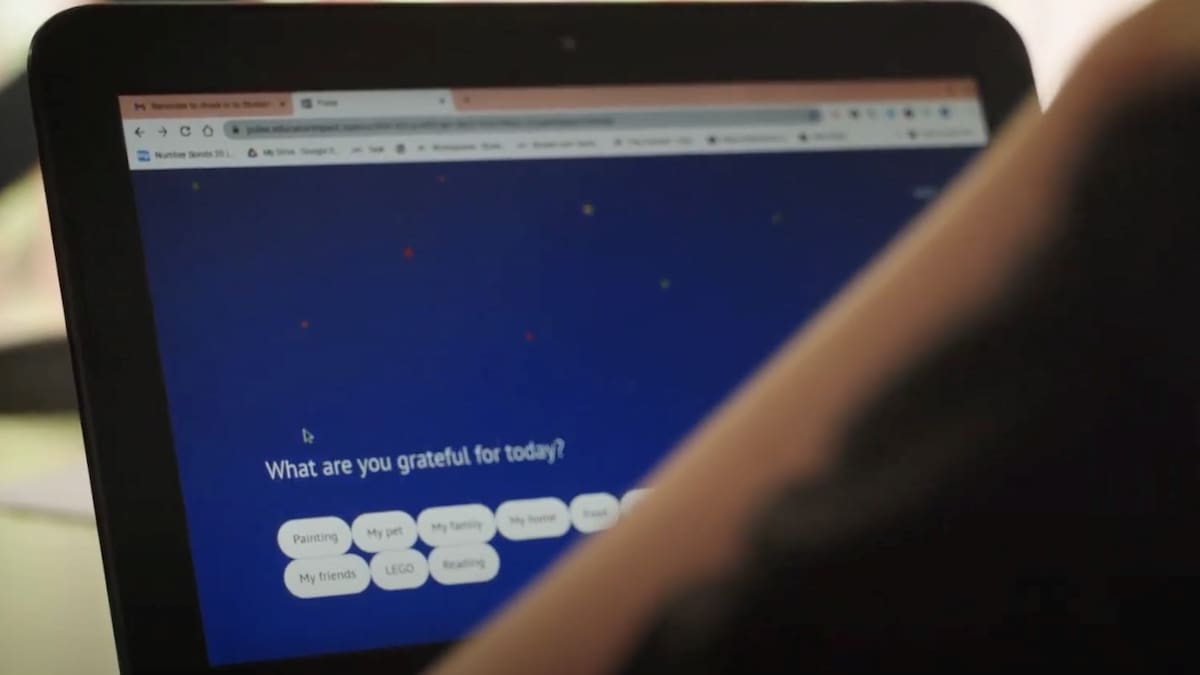Donna Nee, tumuaki (principal) of Henderson North Primary, says that for tamariki, speaking up can be associated with stigma and they can be taught to suppress their feelings.
“We know that our tamariki have borne the brunt of their whānau in terms of the social and financial challenges facing the current economic climate.
“In that dark place, this technology is a way for them to reach out when they can’t say what they feel or can’t show through their behavior how they feel, or don’t know how to talk. contact someone asking for help.
“Our children are growing up in a digital world so they are used to this type of technology and they use it well.
“I see it as giving them ‘He reo i roto i te pouri’ – a voice from the depths of darkness.
“If they’re starting now in elementary school and they feel comfortable with this kind of platform and they’re able to access and get the instant feedback that they’re used to getting on social media, then it’s going to benefit them. the better as they continue their school years.
“It gives us a very good insight, to know that things are there that we need to pay attention to and monitor, and not think that just because our tamariki are quiet and they do what they should do, that nothing is sitting behind just waiting to have a voice.
“Unfortunately, sometimes, it can be interpreted in the wrong ways. You don’t talk about it. It is critical because the whānau or aiga feels like a reflection of itself. ”
Nee says children are taught not to speak.
“They caught it.
This technology also helps to maintain privacy, so children will be able to talk to the teacher without seeing their peers. This way, they know that there will be no repercussions for whānau or other children, or even for other teachers because they choose who they want to connect with on stage.”

Andrew Sylvester, Linewize school health specialist and technology provider, says vulnerable children don’t always talk and identifying them is a big challenge in schools.
She says giving teachers and school leaders insight into how a student is feeling can change their classroom relationships and will help them connect more confidently with more students — before they engage in challenging behavior, they harm themselves or others, or withdraw from education. and their peers completely.
He said the opinion of the teachers was that the girls help to improve the results of education.
“This technology is student-centered, and gives them the opportunity to constantly think about how they feel and reach out for help if they need it, it also helps them develop the life skills of self-expression and check yourself.
“Students answer five simple health questions and there are any discrepancies or concerns and they can be addressed. When a student indicates that they need help, the software will connect them to a trusted teacher, school leader or administrator of his choice.”

Allan Pollard, CEO of The Trusts, which funded the $71,000 cost of the project, said it was hoped a successful outcome would see the program expanded across the region.
“These children have seen Covid, hurricanes, floods and their parents struggle with the cost of health problems.
“We know that some children can find it difficult to express their feelings in words for many reasons which can lead to feelings of anxiety, depression and confusion. Tools like this can help teachers and educators invest their time where it’s most needed and provide ongoing support and guidance to tamariki who may be struggling.
“We’ve seen cases where students stepping up to the plate have helped schools step in and see students who might otherwise have fallen behind get the help they need.”
Sylvester says the technology is designed specifically for children and links to the World Health Organization’s framework for mental health and wellness.
“In addition to supporting student well-being, the insights gleaned from student voices will help school leaders collaborate to respond to trends they see in data from across the environment.
“The new platform will be available on devices across their territory from this week and we hope this program can be expanded to include students in all New Zealand schools.”
#feeling #Students #receive #software #support #monitor #mental #health #wellbeing
